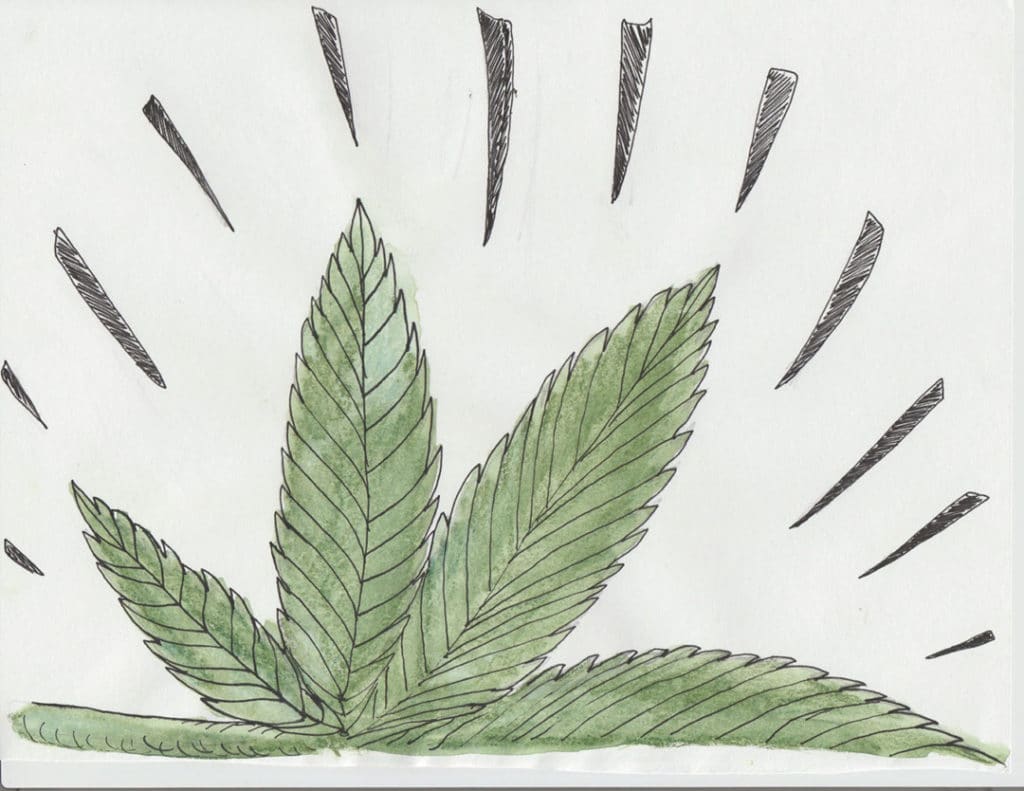Weeds are everyone’s problem, and as I walk through fields and along roadways I note that we already have lots of unwanted plants growing vigorously. Poison hemlock, teasel, bur buttercup, goatsrue, shepherd’s purse mustard and Scotch thistle appear to be growing especially well.
Weeds are not just an agricultural issue, all individual property owners have the first and major responsibility of controlling weeds on their lands. As our society becomes more mobile it’s easier to disperse seeds or plant parts from one location to another. Utah State University studies have shown that one ATV, when traveling off-road, can pick up on average 4,200 seeds per mile. Seeds stuck on vehicles are then spread to other areas. Hikers can do the same thing when weed seeds get stuck to shoes, shoelaces or other parts of clothing. In some cases noxious weeds have been introduced by nurseries as beautiful, ornamental offerings.
In 1971, the Legislature passed the Utah Noxious Weed Act. After enactment of the law, the Department of Agriculture adopted rules to guide implementation of this act. A few years ago weeds were listed as Class A, B or C depending on their seriousness and difficulty to control. More recently the Utah Weed Control Association, in cooperation with state and federal agencies and private land managers, has proposed a statewide strategic plan for managing noxious and invasive weeds. The enforcement of the law is basically the responsibility of the individual counties, county weed boards and county weed supervisors. That proposal prioritizes weeds into the following categories.
Class 1 weeds have a relatively low population within the state and are of highest priority for control or eradication. Such weeds are referred to as an early detection rapid response (EDRR) weed. Some examples of the weeds are common crupina, spring millet, plumeless thistle, oxeye daisy and Japanese knotweed. Many local residents are not familiar with these weeds because they are relatively new to Utah. Every effort is being made to identify the location of these weeds and control or eradicate them before they can get a foothold in our state.
Our ability to detect and document early invasions is getting better as we improve the way we collect and disseminate information about invading plants. The use of GPS and GIS technology is helping weed departments, and even individual citizens, efficiently track weed populations for more efficient control.
Class 2 weeds have a moderate population throughout the state and are thought to be controllable in most areas. Examples of included the yellow starthistle, diffuse knapweed, leafy spurge, medusahead, rush skeletonweed and dyer’s woad. Dyers woad looks daunting in Northern Utah, but other parts of the state have none at all. In our neighboring state of Idaho the yellow starthistle covered only a few acres years ago. Today it covers nearly 500,000 acres. We certainly don’t want this weed to get established in Utah.
Class 3 weeds are found extensively in the state and are thought to be beyond control but can potentially be contained. Statewide efforts are generally toward containment of smaller infestations. Field bindweed (morning glory), quackgrass, Canada thistle, poison hemlock, phragmites and hounds tongue are examples of the weeds in Utah.
Class 4 weeds, in addition to those listed above, are to be prohibited for sale at landscaping nurseries. Myrtle spurge, Scotch broom, dame’s rocket, cogon grass (Japanese blood grass) and Russian olive are examples.
Each county weed department has different priorities, and Cache County has renewed a focus on goatsrue. This plant is somewhat unique to Cache County, and a full summer crew will again marshal their forces to control this weed. Efforts will focus on ground activities and also along waterways.
The county weed department will also continue a roadside maintenance program, spraying and mowing noxious weeds along county roadways. They will not kill the native grasses because grasses typically out-compete noxious weeds. Their canal efforts will consist of spraying noxious seeds along canal banks and even working with irrigation companies to control algae and moss in canal beds. Their boat crew will work to control noxious weeds along the Bear River from the Idaho state line to Cutler Marsh.
Among other things the county weed supervisor may be asked to serve notice to landowners failing to control noxious weeds on their property. Some property owners have received said notice already. If deemed advisable, the Cache County Council may send the county weed department onto the neglected property to control noxious weeds. Any expense incurred by the county is assessed to the property owner. If payment is not made to the county treasurer within 90 days, the cost is added to the individual’s property tax.
Our county weed department has established a Vacant Lot Program to spray and mow lots owned by developers or absentee landowners. Not only will this decrease the number of weeds going to seed, it will also reduce fire hazard within municipalities. The Cache County Weed Department can be reached at 755-1562.
Credit: news.hjnews.com













